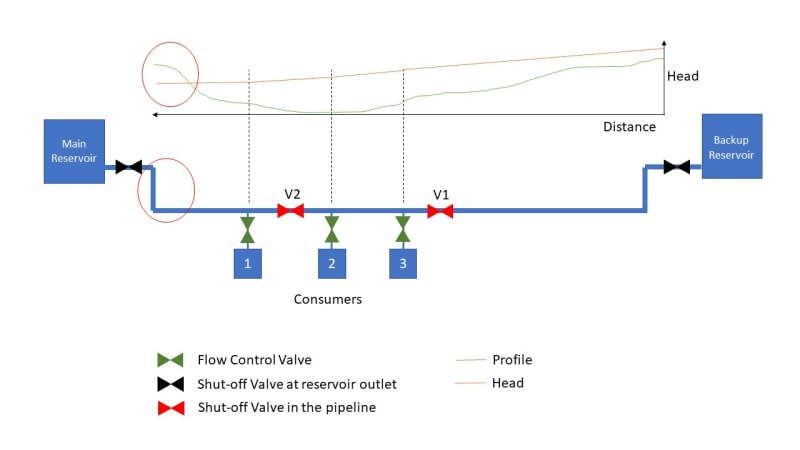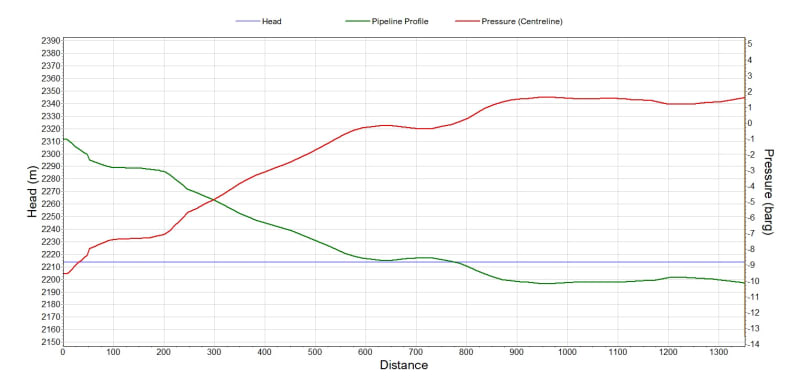Hi all!
I need to solve a small case study and am kind of lost. Hopefully you could give me some valuable inputs or explanations.
For better illustration of below description, I draw a little sketch (please see below).
Normal Operation:
There is a main reservoir (on a hill feeding 3 reservoirs in the valley. Each reservoir (1, 2 and 3) has a flow control valve (100m3/h). The red valve (V1) is closed during this operation.
Everything works fine like this.
Backup Operation:
Now the main reservoir is out of order and further away, there is a backup reservoir (same geodetical height) which can be used. Therefore, the shut-off valve at the main reservoir is closed and the shut-off valve of the backup reservoir is opened. The red shut-off valves (V1 and V2 are open). During this operation, I can feed all the reservoirs in the valley. However, there will be negative pressure in the pipeline (between the consumer 1 and the main reservoir). I know that in this section there is no flow, but there is a static pressure (if I'm not wrong).
In the sketch I draw the hydraulic head in the system when the back-up reservoir is open, and the main reservoir is closed. The profile of the pipeline is drawn in green color and the hydraulic head during back-up operation in orange. I put a red circle to the section where the head falls below pipeline profile.

Could you please tell me if this is physically possible? Can I operate the system like this OR do I need to close the red shut-off valve (V2) that the system works? In this case only consumer 2 and 3 are operable.
Kind regards,
Jack
I need to solve a small case study and am kind of lost. Hopefully you could give me some valuable inputs or explanations.
For better illustration of below description, I draw a little sketch (please see below).
Normal Operation:
There is a main reservoir (on a hill feeding 3 reservoirs in the valley. Each reservoir (1, 2 and 3) has a flow control valve (100m3/h). The red valve (V1) is closed during this operation.
Everything works fine like this.
Backup Operation:
Now the main reservoir is out of order and further away, there is a backup reservoir (same geodetical height) which can be used. Therefore, the shut-off valve at the main reservoir is closed and the shut-off valve of the backup reservoir is opened. The red shut-off valves (V1 and V2 are open). During this operation, I can feed all the reservoirs in the valley. However, there will be negative pressure in the pipeline (between the consumer 1 and the main reservoir). I know that in this section there is no flow, but there is a static pressure (if I'm not wrong).
In the sketch I draw the hydraulic head in the system when the back-up reservoir is open, and the main reservoir is closed. The profile of the pipeline is drawn in green color and the hydraulic head during back-up operation in orange. I put a red circle to the section where the head falls below pipeline profile.

Could you please tell me if this is physically possible? Can I operate the system like this OR do I need to close the red shut-off valve (V2) that the system works? In this case only consumer 2 and 3 are operable.
Kind regards,
Jack

